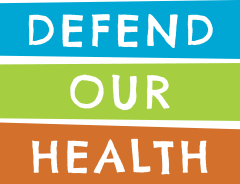What is the Circular Economy?
December 6, 2017 | Uncategorized |
Every week, it seems, we see news stories like this latest report about a “sea of plastic” devastating a once-pristine diving site in the Caribbean. Plastic pollution is a disaster for people and the planet—but it doesn’t have to be this way.
What can we do to solve this crisis? Build the circular economy.
In a circular economy, renewable, plant-based—biobased—materials are used instead of wasteful and toxic petrochemical plastics. In a circular economy, the products we use every day come from sustainable sources and replenish the earth at the end of their usable life.
Instead of relying on materials sourced from oil and natural gas, which often come loaded with toxic chemicals such as phthalates, we’d rely on materials that protect our health—and work to fix the climate crisis, at the same time.
Our current economy is linear—a “take, make, dispose” system. We take fossil fuels out of the ground, make them into toxic chemical-laden plastics, and dispose of those plastics in landfills or as litter—harming the planet and our bodies in the process.
Our business-led partner, Biobased Maine, is working in partnership with the Strategy Center to replace today’s wasteful system with a healthy circular economy in our home state of Maine.
Here’s what that circular economy would look like here in Maine:
Step 1: Feedstocks
Renewable resources from Maine—including low-grade pulp wood, forest residues, and agricultural waste—can replace petroleum as a raw material. Woody biomass is an abundant second-generation feedstock that avoids the use of food crops and genetically modified organisms (GMOs). Compared to industrial corn, Maine’s forest resource offers a lower carbon footprint and far less petrochemical inputs.
Step 2: Sugars
Advanced technology can convert biomass into cellulosic sugars. Sugars are the chemical building blocks of nature.
Step 3: Materials
Biobased chemicals, bioplastics, and advanced biofuels can be manufactured from cellulosic sugars, creating good jobs that can revitalize rural communities.
Step 4: Products
Biobased materials produced in Maine can be incorporated into a wide variety of consumer and commercial products, helping to meet rising global demand for safer, more sustainable goods and services.
Step 5: Closed Loop
At the end of their useful life, many biobased products can be recycled for reuse or composted back into the soil.
In a circular economy, we can protect ourselves and the planet from pollution, waste, and toxic chemicals—and, at the same time, create good green manufacturing jobs to revitalize rural communities in Maine.
Learn more about our Sustainable Economy program and explore the work of Biobased Maine.
